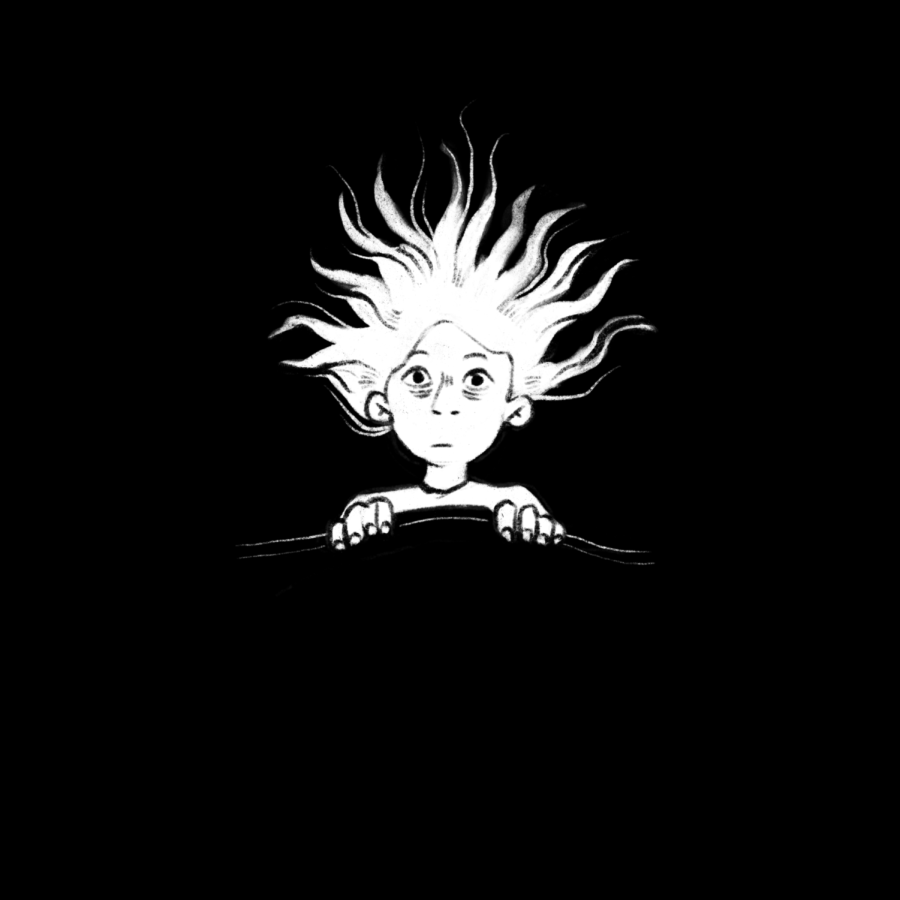Stress Dreams: The Unhappy Marriage of Memory and Cortisol
With finals rounding the corner and the Omicron variant’s rampage through campus necessitating Oberlin’s temporary return to online classes, it’s a stressful time to be an Obie. For many students, the cold, gray monotony of a Midwest winter is already a formidable obstacle to mental health maintenance in itself, and this year’s proliferation of extraneous stressors is throwing lifestyle habits, especially sleep schedules, into a tailspin. Stress dreams, elusive specters whose amalgamous forms often confound their origins, are lurking everywhere. This January has evoked mysterious derailments — from sleep paralysis to COVID-19-related nightmares — for countless sleep schedules.
College fourth-year Olivia Gregory is no stranger to stress dreams. Though academic anxiety regularly brings on nightmares about missing assignments, her strangest and most jarring dreams often manifest in a spooky phenomenon — sleep paralysis.
“I have really bad sleep paralysis, and it happens to me a lot when I get super stressed,” Gregory said. “[Some]thing that reoccurs when I have sleep paralysis and stress dreams — because honestly, they’re pretty consistent with each other for me — would be the feeling of not being able to breathe. Coupled with the fact that I feel like I can’t see right, it’s all around a bad time.”
Though Gregory’s sleep terrors occur in frequency proportionally to her stress level, they do not tend to depict real-life scenarios. For College third-year Lena Golia, on the other hand, stress dreams are grounded in memory.
“I recently had a stress dream where I was back in high school,” said Golia. “I’m walking through the halls, everyone around me has a mask on and I realize, ‘Oh my god. I don’t have a mask on.’ It was super stressful. The dream was definitely not about the mask. I think it was about the stress of forgetting things.”
If, like Golia, you have found that present-day scenarios, like a global pandemic, have become confusingly woven into the themes of your latest stress dream, you are not alone.
A 2004 study conducted by the University of Arizona Department of Psychology found that this bizarre crossover between real life and dream worlds likely involves cortisol, otherwise known as “the stress hormone.” Cortisol levels are impacted by a variety of internal and external factors; nutrition, estrogen, and exhausting all-nighters can cause natural fluctuations in cortisol levels throughout the day and even into the night. The aforementioned study found that cortisol levels typically rise and peak in conjunction with our REM (rapid eye movement) cycle. This sleep stage also has a memory recall rate of 81.8 percent, the highest of any phase of sleep. Researchers at the University of Arizona concluded that the high levels of cortisol present during REM sleep interfere with our memory recall, altering our memories in ways that make our stress dreams feel just real enough to be utterly terrifying.
College third-year Ana Rubianes Sampaio shares that most of their dreams tend to be stressful; more often than not, they delve into future fears rather than past forgetfulness.
“When it comes to dreams that deal with interpersonal themes like personal issues or friendship drama, … they manifest from my anxiety,” they said. “They are mostly about things that I worry will happen.”
Not only do raised cortisol levels impact the brain’s ability to parse through memory-induced dreams and to discern the real from the imagined, but raised cortisol levels can also lead to recurring stress dreams. The aforementioned study notes that when we wake from a particularly jarring dream, our cortisol levels are naturally heightened by the dream’s duress on our bodies. Coupled with the lack of sleep, this increase in cortisol makes sleeping restfully even harder the next night. Sweet dreams!











